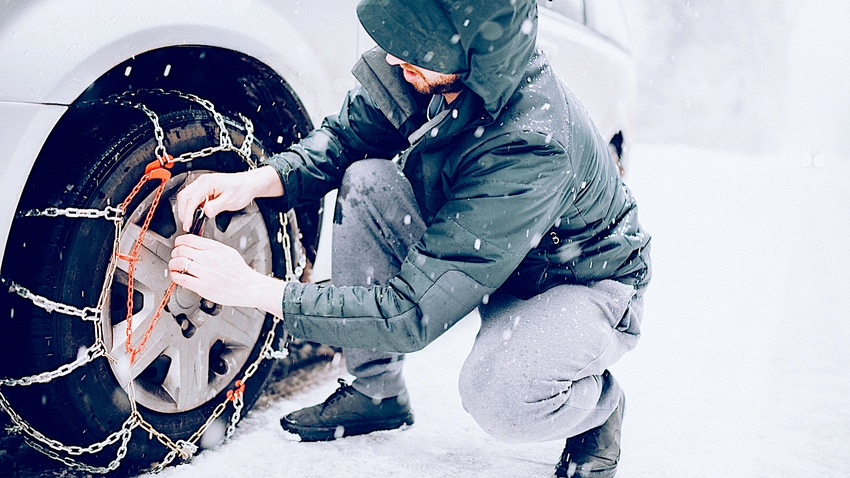Hyundai Develops Automatic Snow Chain Tech
Shape memory alloy can be deployed as tire chains at the press of a button.

As some of the first snowfall of the season lands in parts of the country, more drivers’ minds are turning to snow driving, and with it, consideration of snow tires or, if they’re headed to higher elevations, snow chains.
But installing snow chains is tedious, and the chore is commonly performed roadside, in cold and potentially dark weather, so it is an unpopular task with drivers.

Mountainous areas often require snow chains in winter months. DAN CARNEY
The Hyundai Group, through its Hyundai Motor Co. and Kia Corp. subsidiaries, seeks to help drivers avoid this headache, with the invention of snow chains that can deploy electrically, with a touch of a button from the driver’s seat.
Hyundai’s engineers have developed chains that are built into the wheel and that slide through molded slots in specially designed tires. They use shape memory alloy so that they can extend when electricity is applied, and then retract to their normal shape when the current is removed.
“This innovation, which will hopefully be introduced on Hyundai and Kia vehicles someday, reflects our commitment to turning advanced technologies into real-world solutions that benefit customers,” said Joon Mo Park, Head of Advanced Chassis Development Team. “We will continue to develop technologies that enhance the safety and convenience of our vehicles and bring value to our customers.”

The metal chains retract with the tires’ molded-in grooves so that during normal driving they don’t touch the road surface, preserving the tires’ regular dry-road characteristics. This also makes tire wear more visible, as the worn rubber exposes the chains to more obvious sight, helping to remind drivers to replace their tires.
While this sounds like the realm of science fiction, Hyundai has patents pending on the technology in both South Korea and the U.S., with plans for production once the chains have been through the usual durability and performance testing and they’ve been approved by government regulators.
About the Author(s)
You May Also Like





